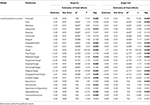

Martin Teicher, pictured above, has documented the damage that parental verbal abuse wreaks on the brains of their children.Īccording to research from McLean Hospital, seemingly harmless anger may cause invisible damage to the brains of young children. The problems start when anger boils over into hostility and aggression, behaviors that cause harm. Traffic snarls, unsympathetic colleagues, playground bullies we all have our triggers. Ultimately he hopes this work will give clinicians better insights into which treatment options might be best for patients. Now Dougherty is applying these research techniques to examine what happens in the brain during treatment for anger and depression using drugs or cognitive behavioral therapy to better understand how treatments work mechanistically. More recently, Dougherty used functional magnetic resonance imaging to achieve a more fine–grained examination of the timing of the amygdala’s activation during angry moments. Rather, activity in the amygdala increased and angry outbursts ensued. In another study, Dougherty found that in people with major depressive disorder and anger attacks the orbital frontal cortex did not activate. In depressed people who are prone to anger attacks, this neurological brake fails to engage. “Healthy people experience anger,” says Dougherty, “but they can suppress it before acting on it.” At the same time, a part of the orbital frontal cortex, just above the eyes, also engaged, putting the brakes on emotion. The best way to induce emotion is through autobiographical scripts.”ĭuring angry recollections, the amygdala fired. “You can try to spark anger by showing upsetting pictures, for example,” says Dougherty.

Subjects simulated angry moments by recalling the moments in their lives when they felt rage.

He employed positron emission tomography imaging to examine which regions of the brain engage during angry moments. Understanding this link could provide valuable insights into these disorders and their treatment.ĭougherty began in 1999 by investigating healthy people with no signs of depression and no history of angry episodes. “We wanted to investigate the mechanisms behind those reactions.”įor these patients, angry outbursts usually stop when the depression ends. “People will yell or throw things,” says Dougherty. Some of these patients experience angry flare–ups that are inappropriate to the situation and out of character for the individual.
#Anger secondary emotion series#
This finding is one in a series from studies led by Darin Dougherty, an HMS associate professor of psychiatry at Massachusetts General Hospital, that aim to uncover why anger attacks occur in patients with major depressive disorder. When an angry feeling coincides with aggressive or hostile behavior, it also activates the amygdala, an almond–shaped part of the brain associated with emotions, particularly fear, anxiety, and anger. The words used to describe anger tend to be volcanic. Resources for those affected by War in Ukraineĭepression and anger often go hand in handįlares and flashes.Celebrating 50 Years of Diversity and Inclusion.Research Departments, Centers, Initiatives and more.


 0 kommentar(er)
0 kommentar(er)
